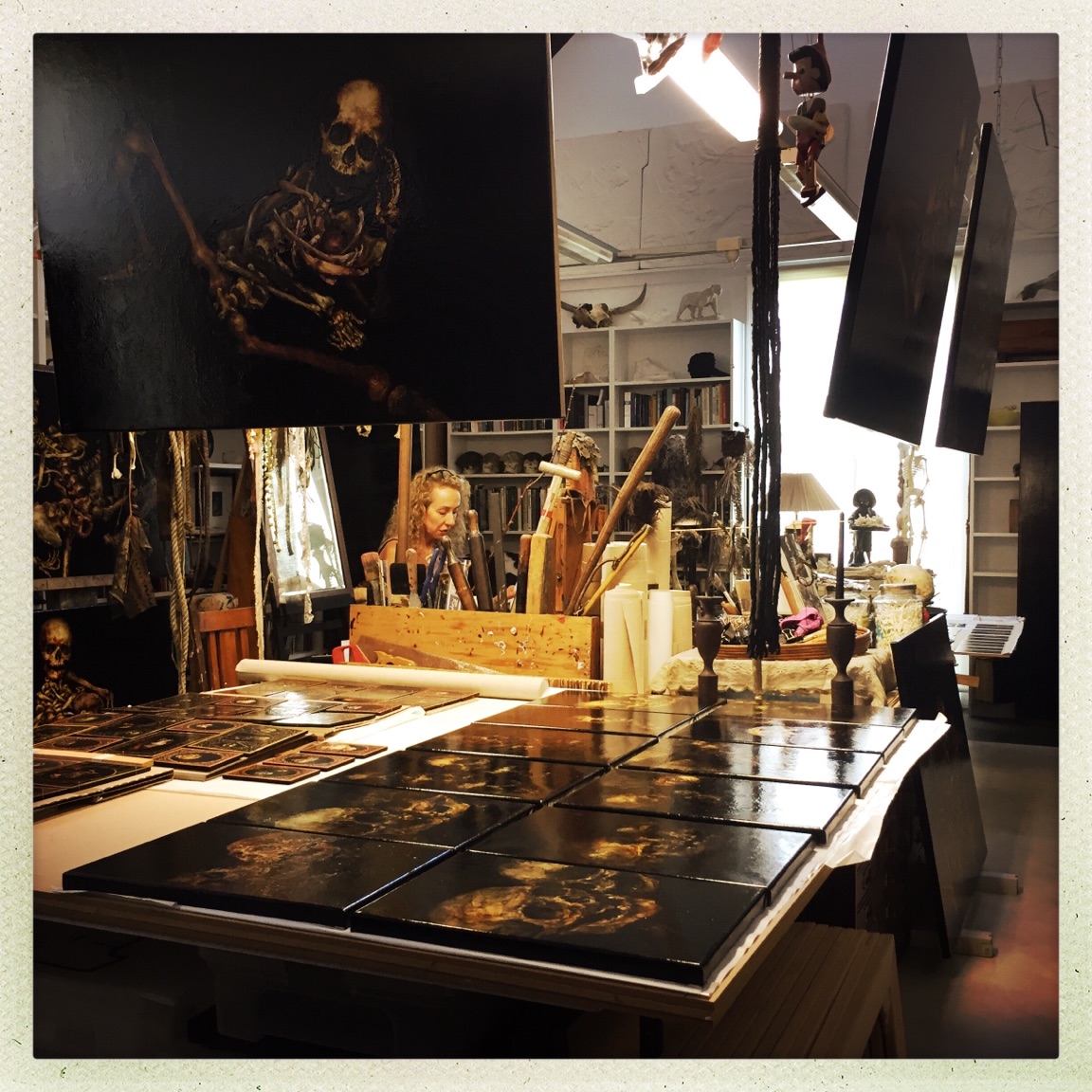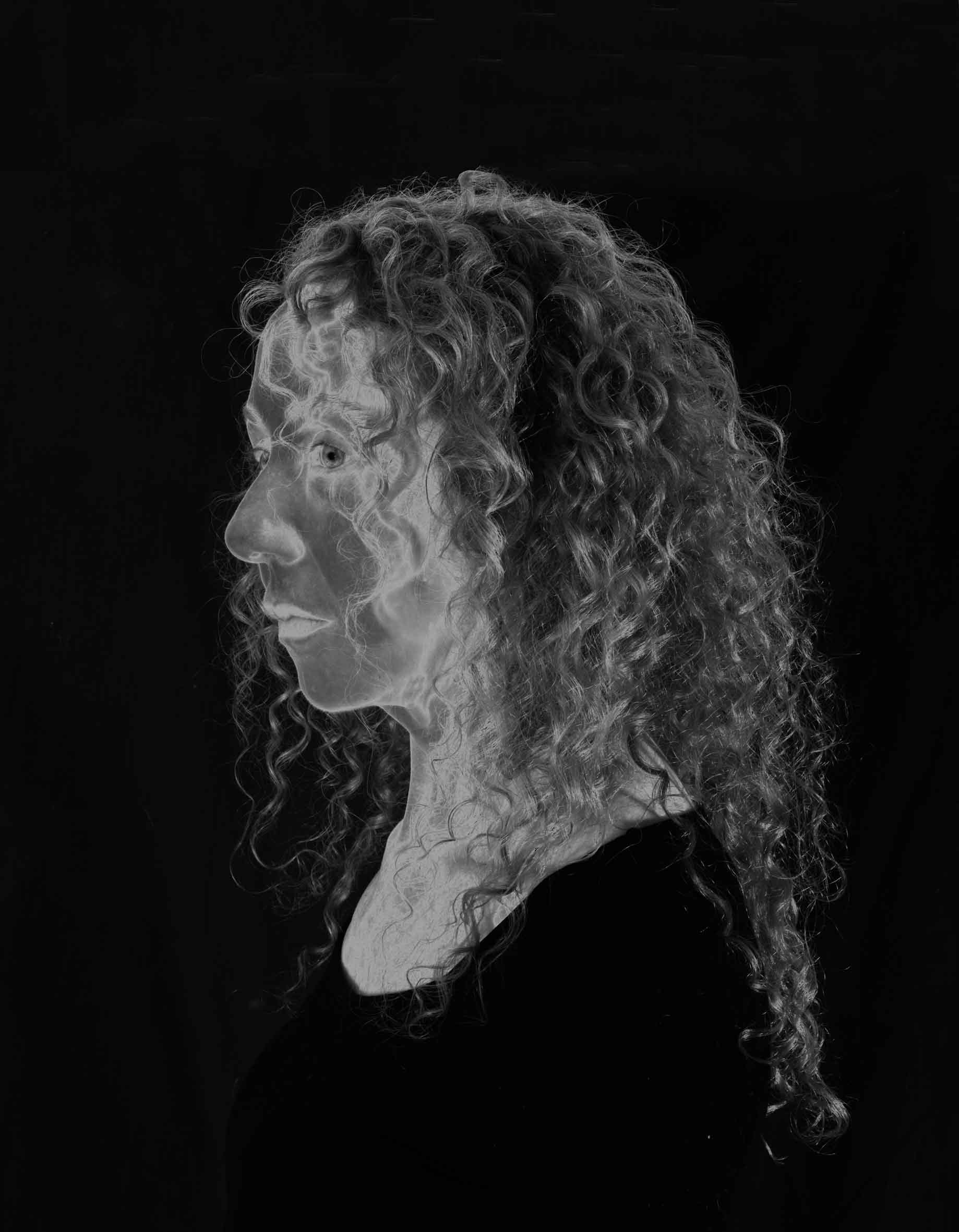BIOGRAPHY


Artist Statement:
The cast of the undead prance, pout pose like centrefold models, leer, laugh loom and madly as well as crudely gesticulate with the vigor of dangling and dancing skeletons in a fun park ghost-ride. They can also suffer and suggest violent and gruesome lingering deaths – crucifixion, impaling, dismemberment and there is a sort of insubordination in this grotesque violence, and a sort of pluck or mad fortitude, suggestive of the dark humor of Goya. And this darkness is eerily substantial” -Edward Colless
There are messages in my skulls. We live in a fragile world.
1965, age seven, I loved listening to the sounds of Dad carving wood in the garage as I lay in bed. The sound of his mallet and chisel would resonate throughout my room like a Grand Father clock. A loud constant echo. It was as if he had magic in his hands. The smell of wood chips and dust brought forests and the wilderness to my imagination.
It was around this age that I declared to the ‘world’ that I was to be an artist. It was the same year my parents said that I had an identical twin and she had died very young. I had an inexplicable feeling of insecurity and would look in the mirror, hoping that she would be there. And it was, with this fascination, I accidentally taught myself how to paint in reverse. The ‘Looking Glass’ became a life tool. The mirror’s surface with the play of light and space became the black mirror and like a mirrored reflection steeped in candlelight, the black surface exposed the viewers their own image trapped in time.
As a child it was exciting to find hidden treasures in the earth, exploring with my hands in the garden. The painting technique I developed became linked, like digging into the ground with the painted layers being stripped away to reveal molten like sediments of colour encased in blackness. And like bubbles rising from the deep, intricate threads of fraying lace and fabric patterns form a network of skeletal eyelets, recalling the bridal dressmaking tradition of my ancestors.
I travel yearly to France and Germany where I have successfully exhibited regularly for over a decade and many noted European collectors have purchased my paintings.
Whilst in Europe I document, through drawing and photography, skulls that I encounter either in catacombs, crypts or museums. So many human skulls crumbling into fragments and so many people. They constantly intrigue me as every one has a different shaped head, everyone has a different shaped skull. I am able to read a person’s skull shape from their face and so my obsession is continuously fed and challenged.
As I age, my perception is more acute. To draw and paint the dead whilst listening and watching the living continues and compels me, like a powerful addiction, it never lets go.
Biography
The human skulls that I paint call upon fragments of the past. A history of life and death, humour and tragedy, truth and lies. My paintings are of the living dead and of the dead living, as though the soul continues to exist as a shadow that takes root elsewhere. This life and death duo continues to fascinate me, as if from a magical and ancient past they create hidden storms that rend and possess the unconsciousness.
I construct classical portraits and figural compositions that openly reference a Stygian, sardonic lineage from Bosch to Ensor. Unearthing the ancient tradition of Memento Mori (translation, Remember your mortality) and Dutch 16th century Vanitas art, my puppets perform on an intense stage where there is no confession, but grim warnings. They at times convey a strong sense of humour which is parallel to the skull itself that looks as though it smiles in death. Or as beasts in nature that bare their teeth in anger their smile appears passive but behind it lurks the deadly truth.
My wicked take on a woman’s lot is never far. I revel in the intricate textures of fraying lace and embroidery as the tradition carried through by my grandmother’s family is bridal dressing making. The patterns of fabric are parallel to the skeleton and like a mirrored reflection steeped in candlelight the black surface exposes the viewers own image caught in time. The devil, the skull, the potions, the afterlife: solitary and poised, gussied up and show casing as portraits of the infamous, historical self possessed traitors. Some in their elaborate costumes for ceremonial scenes of marriage, political meetings, religious occasions. Such imagined illumination brings in Rembrandtesque tones of siennas, umbers, golds and notes of dry white for a shard of desiccated bone or a glint of tooth enamel. But the skull burns brilliantly with red like the palette of social and spoiled decadence.
